Hardcover non-fiction or poetry can be a great choice of gift for the special or hard-to-buy-for child in your life. Here are three gorgeous, recent international books, all themed around nature.
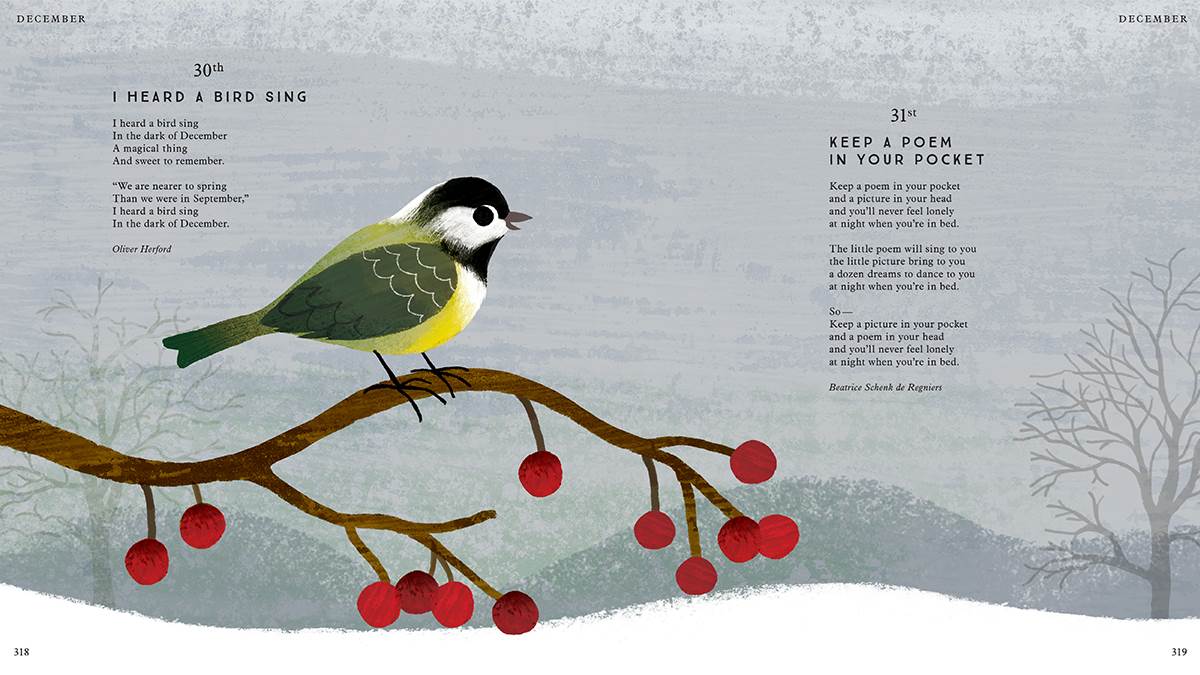
I Am the Seed that Grew the Tree: A Nature Poem For Everyday of the Year, selected by Fiona Waters and illustrated by Frann Preston-Gannon (Nosy Crow)
Whatever you think of kids using digital devices these days (evil or harmless…?), there is no denying that this mighty tome offers the opposite of those. It’s big, on the verge of cumbersome, but in a satisfying, lug-it-with-all-your-might sort of way. It’s full of poems – one for each day of the year – which, more than anything, ask the reader to slow down and consider something deeply for a moment. And the poems here are connected by their theme of nature – birds and the moon and wind and fruit trees: look outside, reader!
It is intended to be a book that you’d give to a child on a special occasion, like on their tenth birthday, or to celebrate them starting school, or a Christmas when you want to be the favourite uncle. There’s a real cloth spine and a real silky ribbon sewn into the binding. Every spread has between one and three poems, with a gorgeous, evocative illustration of an aspect of the poems – for example, mice cling to stalks of wheat alongside two poems about crops and hay, and a hawk soars above mountains next to two poems named ‘The Hawk’ and ‘The Mountain Peak’.
I need to point out that this is a UK book, so the seasons and animals reflect the natural world of that part of the world, which in a lot of rather important ways is the opposite to New Zealand’s. The early February poems talk about snow and foxes; the mid-July poems mention the warmth of the sun … and foxes. So Kiwi kids might feel upside-down, but we grow up rather used to this, reading so much UK and US literature. You could take it as a chance to talk about geography and the way things are different around the world. (And balance it out by reading heaps and heaps of local books, too, eh.)
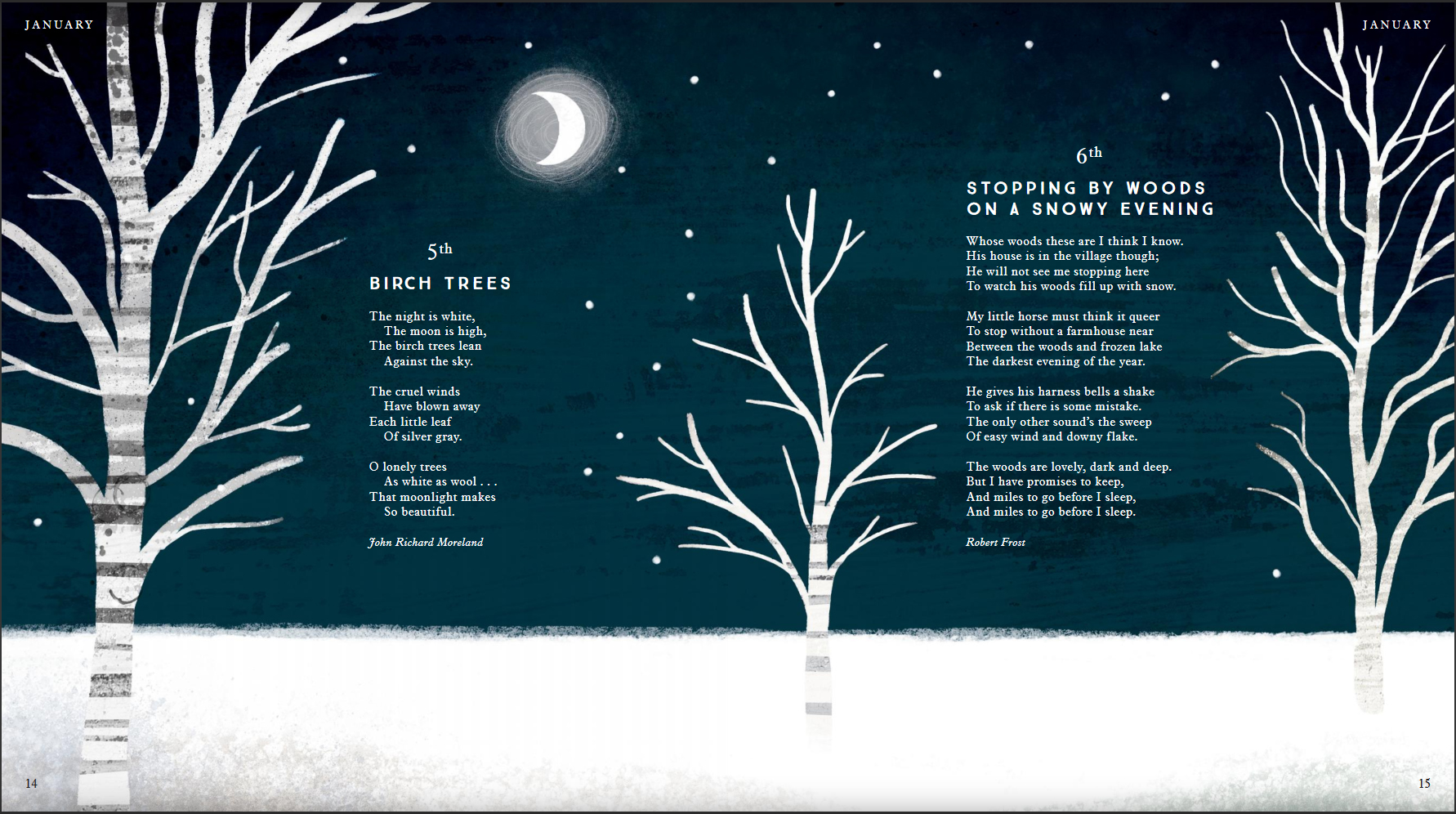
The thing about poetry anthologies like this is that sometimes copyright issues mean editors can’t include all their first choices – which can be the reason for fewer contemporary inclusions than you might expect or want. I don’t know what the selection process was for this one, but it’s ended up with quite a lot of poems from, ahem, Old White Dead Guys (Ted Hughes, Robert Frost, Ogden Nash, Shakespeare, Walter de la Mare, William Blake) plus the usual Dead Gals like Emily Dickinson and Christina Rossetti, and lots of wee traditional ‘Anonymous’ rhymes.
There’s an attempt, I think, to balance things out with lively inclusions from Jackie Kay, Benjamin Zephaniah, the always fun Roger McGough, an Apache song, and poems by Canadians and Australians – but in a major anthology in 2018, I would love to see more poems from different parts of the world, more different voices, and most especially more from poets of colour.
For me, even with all its fun and funny poems, the overall effect of the book is rather refined and restrained. But all the poems are great for reading aloud (with a lot of rhyming poems), and there’s loads of joy and wonder among them, and variations in tone, length and approach to language. I mean – it’s a good book, and everyone’s a critic, right? It is a good book, and it’s filling a gap for big gift books of poetry for children.
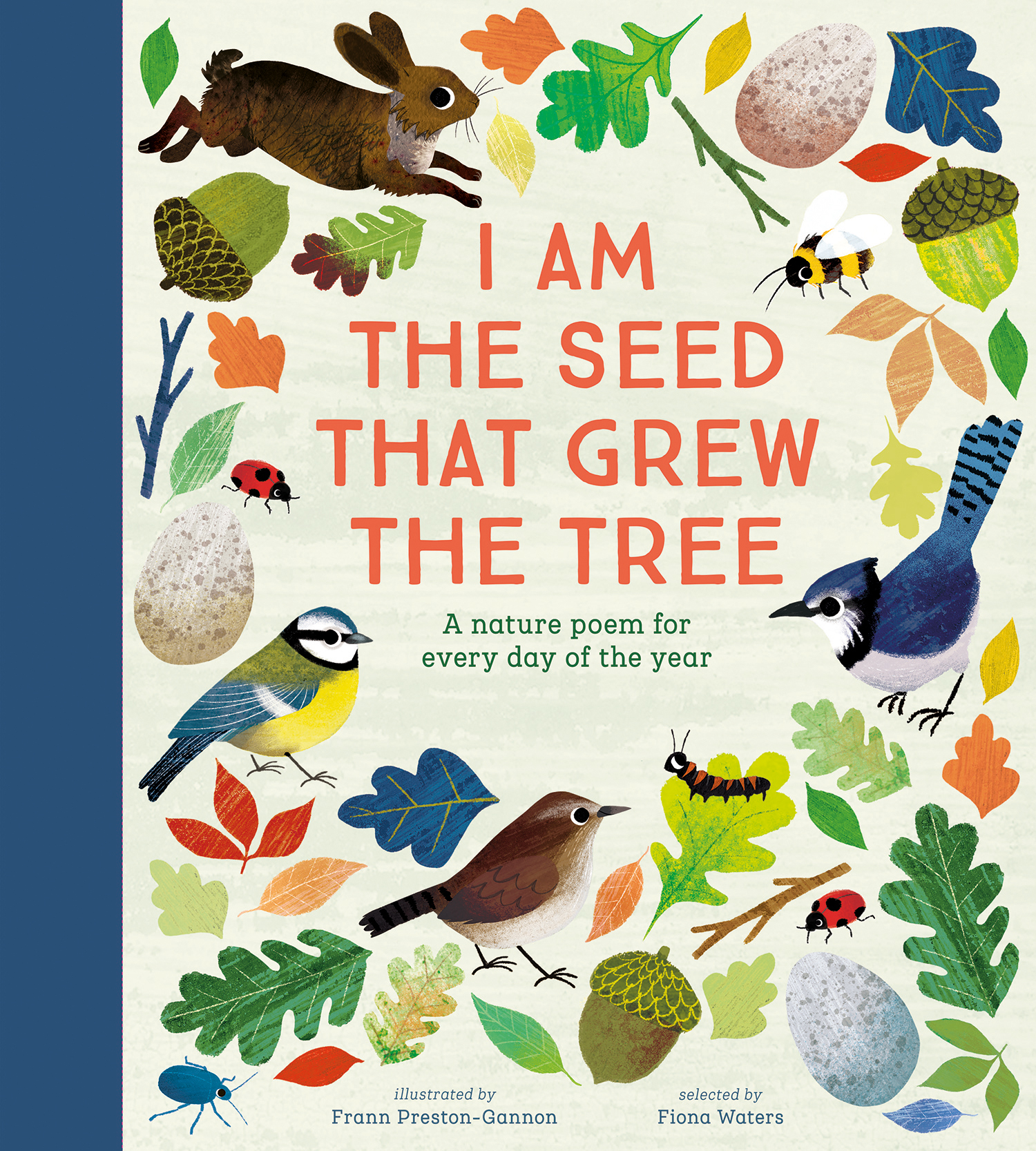
I Am the Seed that Grew the Tree
Selected by Fiona Waters
Illustrated by Frann Preston-Gannon
Published by Nosy Crow
RRP: $55.00
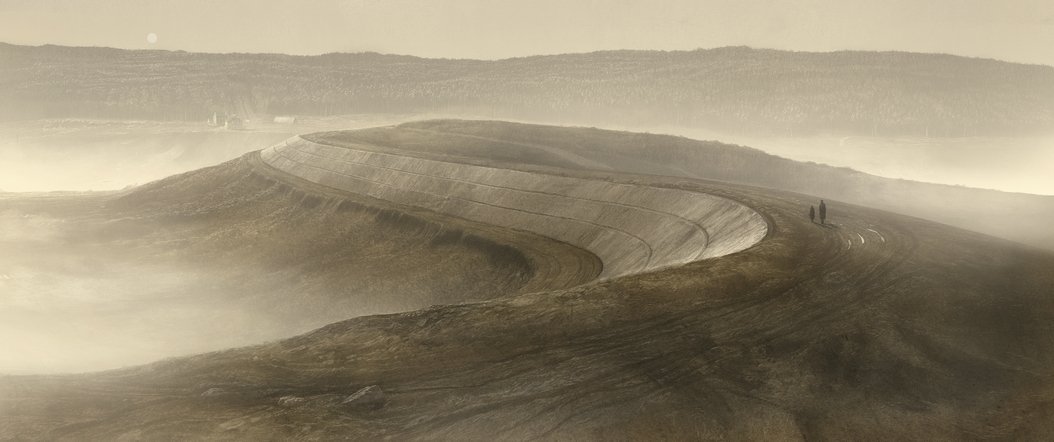
The Dam, by David Almond and illustrated by Levi Pinfold (Walker)
The Dam is picture book for older readers (from seven years through to pre-teens, very approximately). The UK author, David Almond, has won pretty much every children’s literature award under the sun, mostly for his novels for children and young teens (including Skellig, one of my favourite books, ever). The Australian illustrator, Levi Pinfold, is multi-awarded, too.
The text here is a masterclass in evocative language and a remarkable example of how it’s possible to tell a story through what’s left out.
We’re launched into things without exposition or explanation:
He woke her early.
‘Bring your fiddle,’ he said.
The illustration shows a girl and a man walking across rural countryside. It’s an incredibly successful and enticing start to the book – where are they going? Why so early? Why must she take her violin? As we turn the pages, the full picture of what’s happening emerges. I love that the book never quite tells us what’s happening, but we also don’t have to work too hard to figure it out, either.
In the story, the man wants his daughter to help say a proper goodbye to the history of their land – paying homage to the generations of families, homes and wildlife of the place – because a dam has been built, and (spoiler alert, I suppose) it is all about to become submerged under the water of a huge manmade lake.
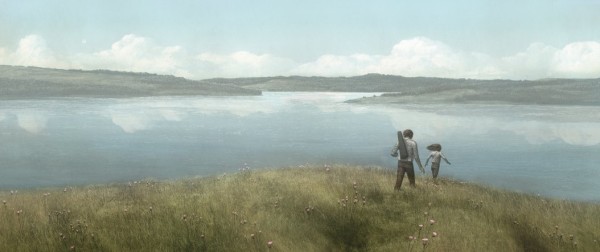
My first instinct was to read this as a request to rally against technology and development – progress kills history, and so on. But, incredibly, that’s not the book’s message, as expressed by the unexpected statement two-thirds of the way through: ‘The lake is beautiful.’
The Dam tips its hat, with deepest reverence, in both directions – to history and progress – and acknowledges that history is a living thing we all play a part in creating. It insists that we don’t forget our past, we must honour our dead, but we also need to appreciate the beauty of what we have right now. My paraphrasing is not doing justice to the multiple sets of goosebumps this book gave me. There are many ‘themes’ in the book – loss, progress, music, hope, life and death. And it’s based on the true story of the UK’s largest artificial lake, Kielder Water in Northumberland, which is so beautifully unlikely.
Pinfold’s illustrations are muted and moody, filled with open space to emphasise the landscape being emptied of people. The way he’s captured the misty morning light is really something, and the considered, subtle details in brighter colours help guide the reader along the book’s emotional path.
I tend to approach ‘serious’ books with my cynicism on my sleeve, but The Dam more than won me over. There’s a lot to think about within its covers, but even more compellingly, a lot to feel, too.
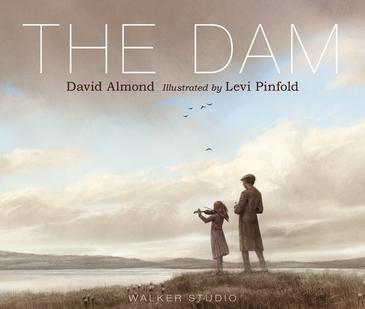
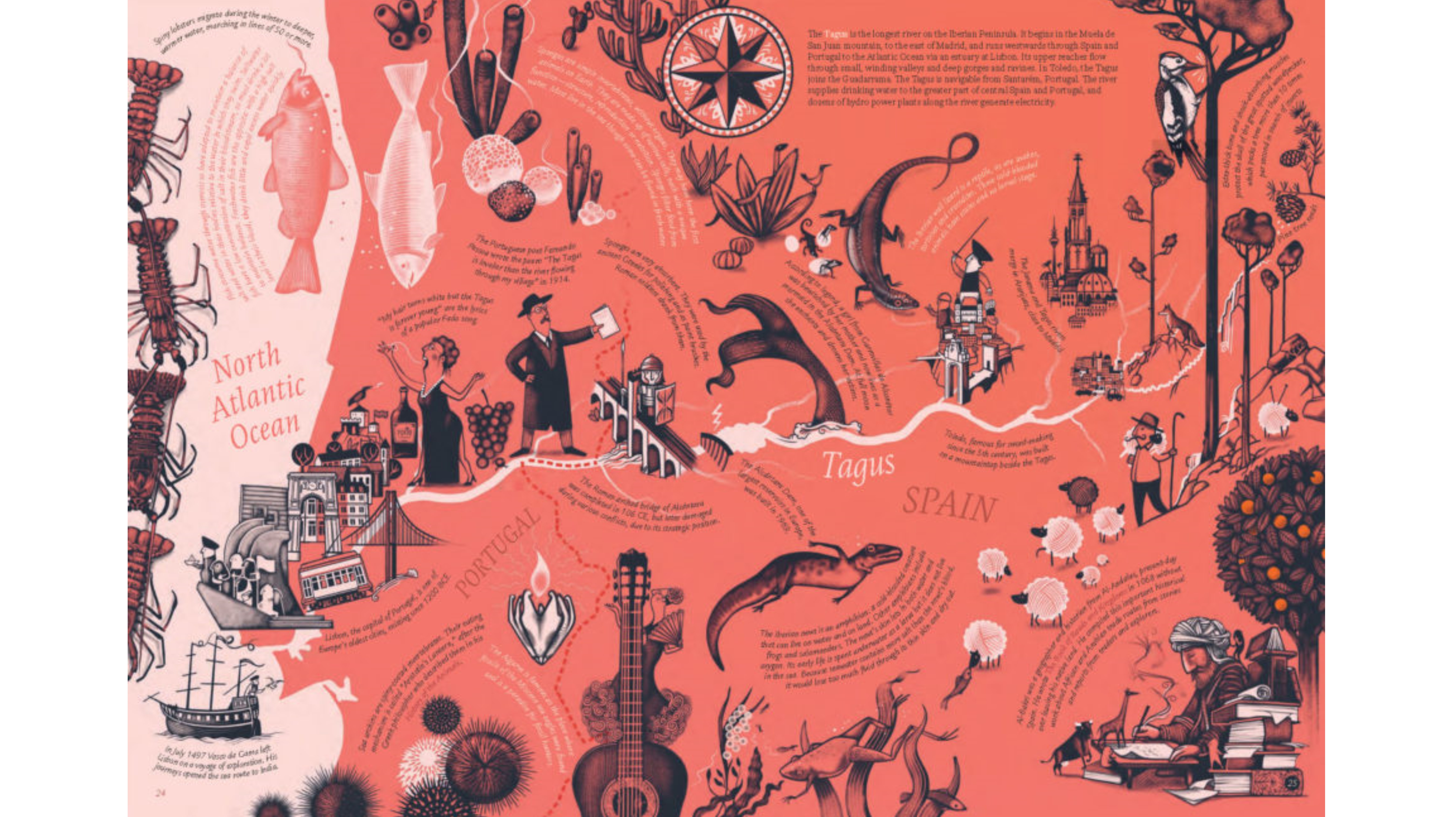
Rivers: A Visual History from River to Sea, by Peter Goes (Gecko)
First off, it’s impossible to ignore the sheer, glorious presence of this book. It’s huge – when open, it’s over half a metre wide. The cover is irresistible in radiant green and yellow. The paper is thick and uncoated, a delight to trace your finger over as you follow the information across the pages. Reading Rivers is an immersive, physical act – you move in close to the pages to take in the small illustrated details and you tilt your head to read the dozens of fascinating facts that curve around the land and rivers throughout the book. If you’re familiar with the author’s previous hit, Timeline, or Gavin Bishop’s Aotearoa, you’ll have an idea of what you’re in for.
The mastermind of the book, Peter Goes, is a Belgian author/illustrator. This edition is published by New Zealand’s own Gecko Press, with the Dutch text translated into English by Christchurch kids’ lit champ, Bill Nagelkerke.
Rivers tells a history of the planet through its bodies of water. We learn about politics, wars and borders, and how rivers came to cut countries in half – or allow for travel and trade. We find out about sea animals and the effect of humans on their ecosystems. There are ancient water-related myths, geology, natural disasters, and descriptions of civic development. It appears no corner of the world is neglected, with multiple pages dedicated to each continent. New Zealand is included with two pages of information relating to the Waikato river.
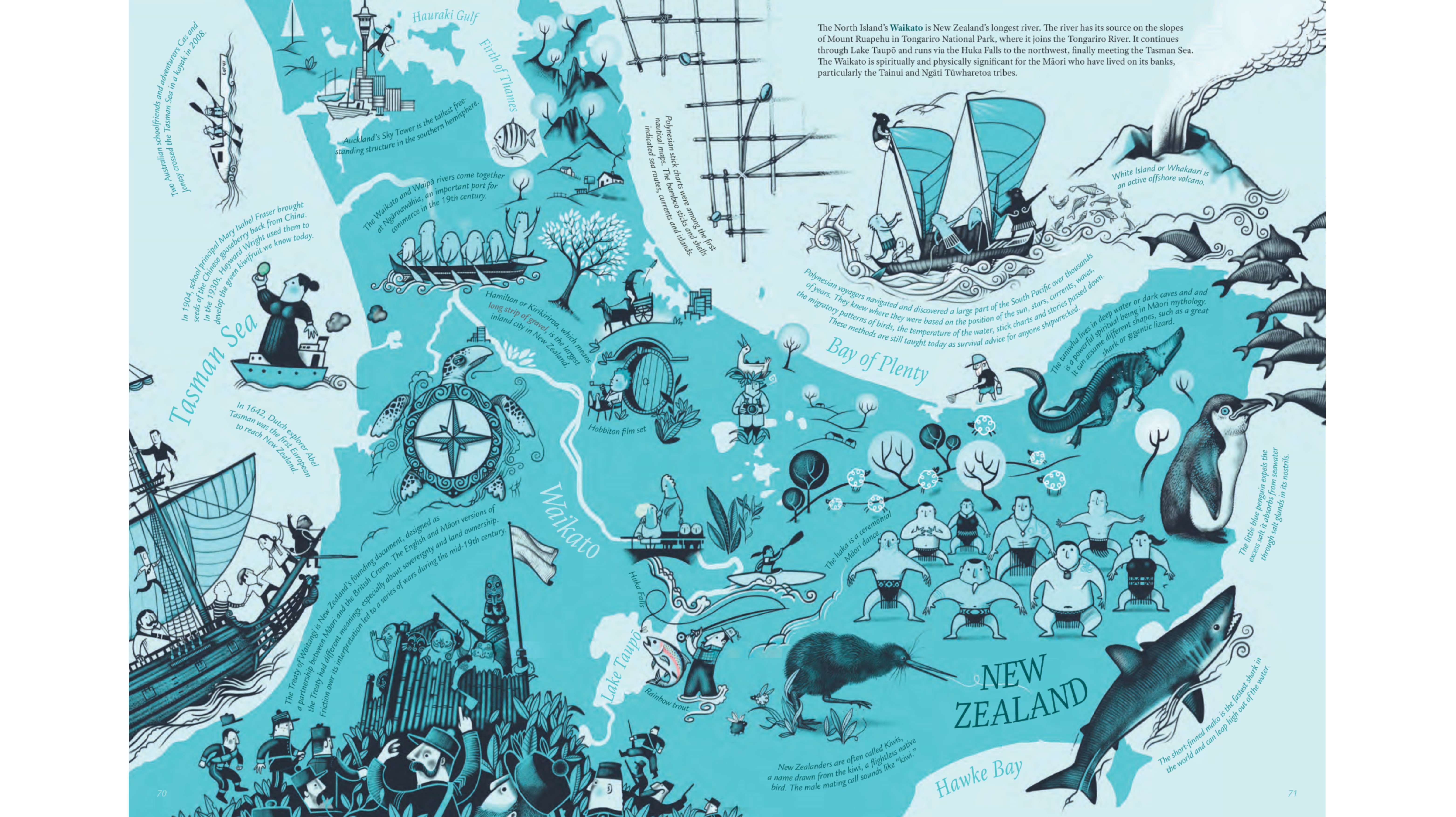
It’s all riveting and genuinely enlightening stuff, for a wide range of ages – I’d suggest upper-primary age through to teens and adults. This could be a good gift option for fact-loving children, teens banned from their devices for the holidays, or even university students studying design.
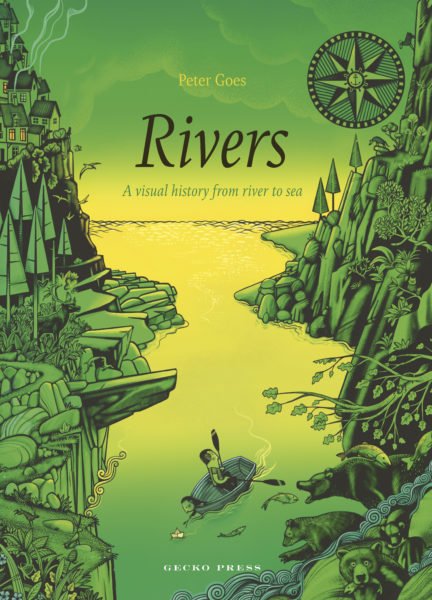
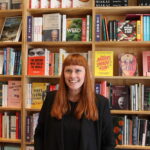
Jane Arthur
Jane Arthur's debut children's book, Brown Bird(PRH) was published in May 2024 to widespread acclaim. Jane is co-founder of The Sapling, co-owned and managed GOOD BOOKS, a small independent bookshop in Pōneke Wellington and has twice judged the NZ Book Awards for Children and Young Adults, in 2019 and 2020. Her debut poetry collection, Craven (VUP) won the Jessie Mackay Prize for best first book of poetry at the 2020 Ockham NZ Book Awards, and her second collection, Calamities!(THWUP) was longlisted for the Mary and Peter Biggs Award for Poetry in the 2024 Ockham Awards.



